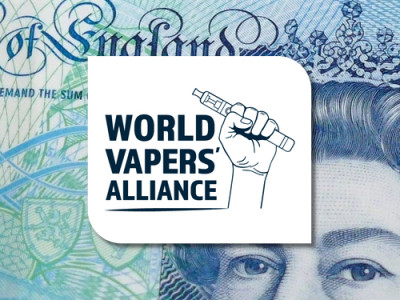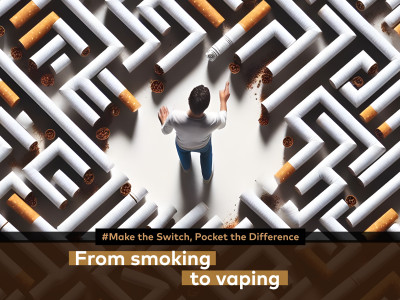Clive Bates has published his “substantially upgraded” question and answer resource on nicotine science and policy: “It mostly focusses on nicotine vaping as an alternative to smoking, but most of the argument also applies to heated tobacco products, modern smokeless tobacco and new oral nicotine products. It consists of about 60 questions and builds on a brief Q & A that I submitted to a consultation, a critique of an absurd anti-vaping Q & A by the WHO and my critique of numerous false and misleading claims made by Professor Stanton Glantz.”
Part of it also focusses on fourteen common myths perpetuated by those ideologically opposed to tobacco harm reduction:
Ecigs don’t help smokers quit
“Evidence from randomised controlled trials, observational studies, population data, and user testimonies converge on showing vaping is an effective approach to smoking cessation. Studies that claim to show no effect suffer a range of shortcomings and biases, for example by including people who were not trying to quit or fail to recognise that people using e-cigarettes may be using them because they are more nicotine dependent (and would have already quit otherwise).”
Vaping causes cancer, heart and lung disease
“There is no evidence that these products present a material risk of disease at this stage. There are studies that show effects of vaping, but these do not show that these effects are sufficient to cause serious disease or to overwhelm the natural defences of the body. Many studies are also confounded by prior smoking, given almost all adult vapers are former smokers. It is, however, possible that there will some risk – this is a harm reduction approach, so we are expecting much lower risks but not necessarily zero.”
Vaping is more addictive than cigarettes
“Not so. Cigarettes are capable of delivering more nicotine to the brain more rapidly than almost any e-cigarette, though some e-cigarettes are now drawing level. There are also other psychoactive substances in tobacco smoke, for example, MAOIs, that may increase the reward and reinforcing properties cigarettes acting in concert with nicotine.”
It is aggressively marketed to teens
“There is no sign of this in reality. Young people take up things for reasons other than marketing – for example, about 1 in 5 American adolescents use cannabis at least once a month, but there is negligible marketing. Teens make terrible customers for vape businesses compared to adult smokers – a ton of political grief, not much consumption (and hence revenue) and most are unlikely to persist for long. It is not enough to point at branding that has a childish theme and then conclude it is targeted at kids – most adolescents are not trying to reinforce a childish image and many adults like youthful nostalgia.”
Epidemic amongst teens
“No, the rise in teen vaping in the United States does not meet the definition of an epidemic. More importantly, drilling down into the headline numbers we find most teen users are making relatively trivial experimental use – a few days each month (‘party users’). Among the regular teen vapers, almost all were prior tobacco users, mostly smokers. For them, teen vaping may be a good thing – a diversion from smoking. Also, there is little sign of dependence in users who were not prior tobacco users. The data is also complicated by the switch to vaping among cannabis users – the surveys do not handle this clearly.”
Vaping is a gateway to smoking
“No credible evidence for this. It is true, however, that teen vapers are more likely to smoke, and this has become an anti-vaping activist talking point. However, those moving from vaping to smoking may have gone on to smoke in the absence of vaping. The most likely cause of this relationship is that whatever inclines people to vape also inclines them to smoke – factors such as genetics, liking nicotine, parental background, home environment, mental health status etc. This is the rival ‘common liability’ theory to the ‘gateway effect’. Scientists who claim they can isolate a gateway effect from common liability do not really understand the problem of confounding.”
Nicotine damages teen brains
“No. We would have seen in this in multiple generations of smokers who were exposed to high doses of nicotine as adolescent smokers. The evidence cited to claim nicotine damages teen brains is based on a few rodent studies.”
It’s a plot by Big Tobacco
“Vaping is a threat to the highly lucrative dominance of the cigarette oligopoly and it was developed outside the tobacco industry. Tobacco companies are all competing vigorously with each other to attract consumers who are keen to switch from long-established cigarette brands. They are driven to develop (or acquire) the best products they can or risk losing customers to competitors. It is generally a good thing that tobacco companies diversify away from only selling the most harmful products. The main risk comes from regulators severely limiting the customer appeal of e-cigarettes and, in doing so, protect the cigarette trade from competition.”
Flavours only attract teens
“It is a meaningless assertion. Flavours are integral to vaping in the same way toppings are integral to pizza – so remove all the flavours and vaping become less appealing to everyone. The majority of adults prefer flavours and many are trying to get away from tobacco flavour. Anti-vaping activists used to highlight ‘kiddie appealing’ flavours like Gummy Bear and Cotton Candy. However, when Juul took off they started to define any flavour that isn’t tobacco as appealing to kids – Juul comes in flavours like creme, mango, cucumber, mint, menthol.”
Promoted as safe/safer
“They should not be promoted as ‘safe’ – very little of anything can meet a literal interpretation of the word ‘safe’. However, they are not just promoted as safer, e-cigarettes are much safer beyond any reasonable doubt. This is because vaping products do not involve combustion and the chemistry of vapour aerosol is much simpler and more predictable than the smoke from burning tobacco in cigarettes. Comparisons of vapour and smoke toxicity suggest nicotine vaping is likely to be at least 95% lower risk than cigarette smoking.”
There are five million teens addicted
“No, this is a baseless US activist talking point. It conflates product use, no matter how occasional or irregular with ‘addiction’. There is very little sign of dependence among adolescent vapers who were not already using other tobacco products. Addiction is a pejorative and emotive word, but it usually implies some sort of harm is caused to the addicted user and that they continue despite the harm. Vaping is not obviously causing its users any harm and many users report that they really enjoy it and are happy vaping.”
Toxicants and ultrafine particles
“Everyone should remember the maxim of Paracelsus, the original toxicologist: ‘the dose makes the poison’. Far too many studies are able to detect toxicants at some very low level (this is a function of the detection equipment). But the risk depends not only on the presence of a hazardous agent but on the user’s exposure to it. Yes, there are some ‘ultrafine particles’ in vape aerosol, but these are chemically and physically completely different to the fine particles produced by combustion like cigarette smoke, diesel engines, power stations etc.”
Most vapers are dual users
“Dual-use means using both e-cigarettes and cigarettes. It includes very different behaviours, vaping most of the time but having an occasional cigarette and smoking all the time and vaping when that is not possible. In the UK, most vapers are not dual users and the proportion of dual users has been falling. In the US, the proportion of dual users has also been falling and has almost reached 50% in 2019. Dual-use is often a sign of a user on a journey from smoking to vaping and can be an encouraging sign. One of the reasons for dual-use is that smokers have been misled about the benefits of vaping compared to smoking.”
Related:
- New nicotine science and policy Q & A published by Clive Bates – [link]
Photo Credit:
Image by Dimitri Houtteman from Pixabay
Dave Cross
Journalist at POTVDave is a freelance writer; with articles on music, motorbikes, football, pop-science, vaping and tobacco harm reduction in Sounds, Melody Maker, UBG, AWoL, Bike, When Saturday Comes, Vape News Magazine, and syndicated across the Johnston Press group. He was published in an anthology of “Greatest Football Writing”, but still believes this was a mistake. Dave contributes sketches to comedy shows and used to co-host a radio sketch show. He’s worked with numerous vape companies to develop content for their websites.
Join the discussion
Harm Reduction For The Rich
The United Kingdom risks becoming a harm reduction country only for the wealthy, according to Michael Landl of the World Vapers’ Alliance
CAPHRA Highlights Tobacco Control Flaws
The Coalition of Asia Pacific Tobacco Harm Reduction Advocates highlights the flaws in tobacco control which has led to the rise of black market in Australia
A Missed Opportunity at COP10
The Smoke Free Sweden movement says that COP10 was a missed opportunity to save millions of lives
COP10: Promote Tobacco Harm Reduction
Experts with Smoke Free Sweden are emphasising the urgent need for a Tobacco Harm Reduction approach at COP10












